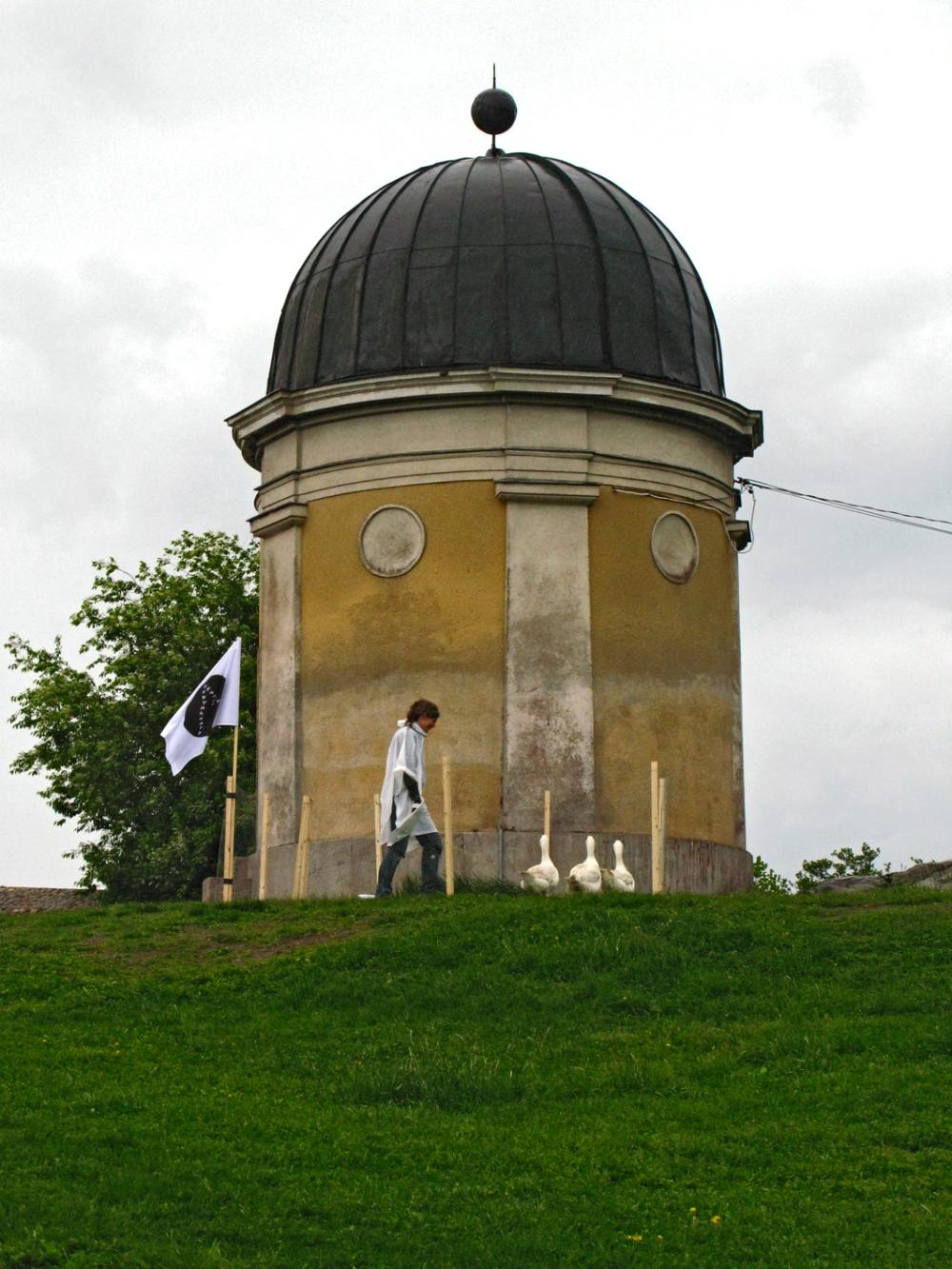
Category of Astronomical Heritage: tangible immovable
Helsinki / Helsingborg Observatory, Finland

Description
Geographical position
Helsinki / Helsingborg University Observatory, Tähtitorninvuori hill, Kopernikuksentie 1, Helsinki, Finland
See also:
- Metsähovi Radio Observatory (60°13´05"N 24°23´38"E), Aalto University, Metsähovintie 114, 02540 Kylmälä, Kirkkonummi, Western Uusimaa, Western Uusimaa (1974)
- Ursa Observatory (Ursan Tähtitorni), Helsinki, a famous early public observatory in Kaivopuisto Park.
Location
Latitude 60°09’42’’ N, Longitude 24°57’18’’ E, Elevation 33m above mean sea level.
IAU observatory code
569
Description of (scientific/cultural/natural) heritage
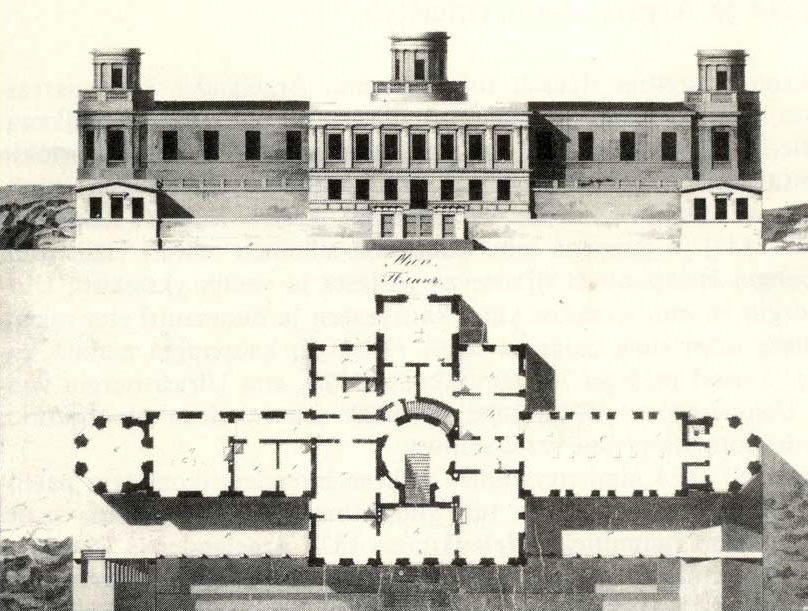
Fig. 1. Helsinki University Observatory, architectural plan (1834), (CC)
The Great Fire of Turku in 1827 caused the relocation of the observatory and the university to the new capital Helsingborg (Helsinki) after such a short period of activity.
Since 1917, Helsingborg was renamed as Helsinki. Physics and astronomy were part of the curriculum in the University of Helsinki since its foundation in 1640.
The innovative construction of the Helsinki University Observatory on Tähtitorninmäki Hill (observatory hill) was also - like the Vartiovuori Observatory, Åbo/Turku, Finland - the work of architect Carl Ludvig Engel (1778--1840), who planned and built it in 1831 to 1834 in collaboration with the astronomer Friedrich Wilhelm August Argelander (1799--1875), director from 1834 to 1837. Engel designd the observatory as part of the Helsinki cityscape: the new north-south axis, Unioninkatu street, ended in the South with the observatory.

Fig. 2a. Helsinki University Observatory from South-East (1834), (CC2)
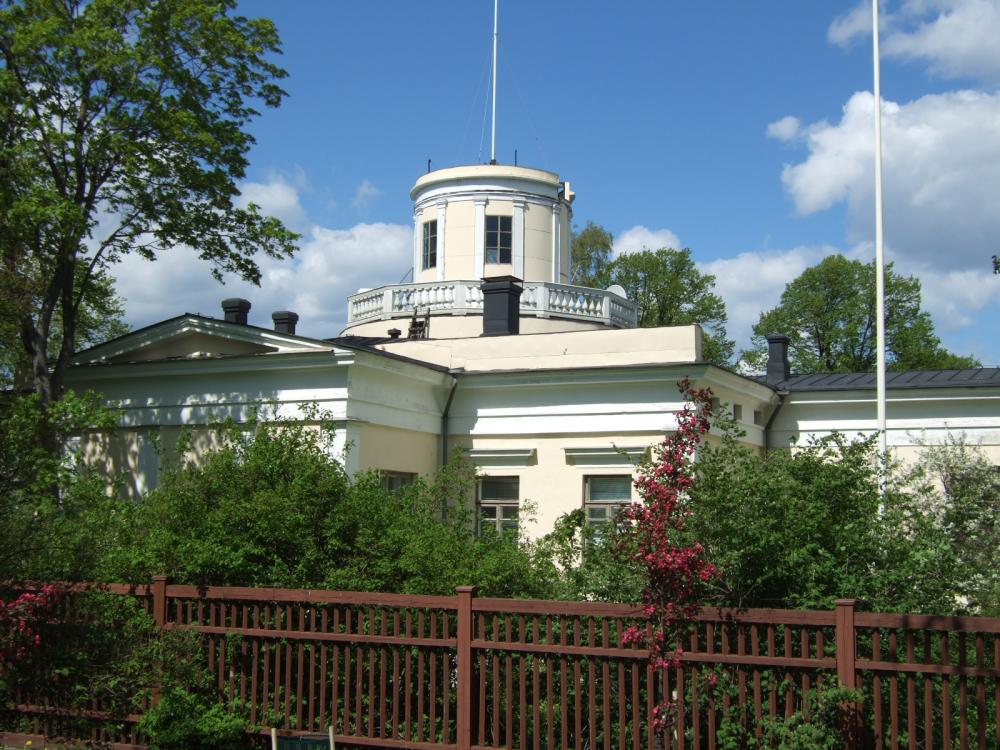
Fig. 2b. Helsinki University Observatory (1834), (CC3, Eisaksso)
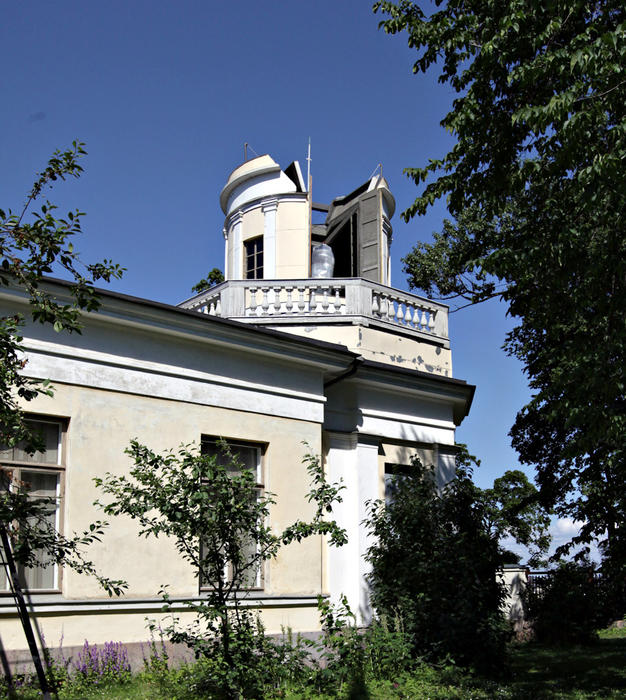
Fig. 2c. Helsinki University Observatory (1834), (Timo Huvilinna)
In Helsinki, a cruciform ground plan was used. A characteristic feature was the façade with three revolving wooden observation towers on the roof (cylindrical, not yet with a dome), which served as a model - first for Kazan University Observatory, Russia (1837) - then for Pulkovo Observatory, the Central Astronomical Observatory of the Russian Academy of Sciences, St. Petersburg, Russia (1839).
And Pulkovo became the model for the design of observatories in Europe and even in the world in the 19th century.
On the central tower of the observatory, which was on the Ulricasborg hill, clearly visible to the port, there was a time ball as a time signal for the ships in the harbour, which could use it to check their chronometers. This precise timekeeping was essential for navigation.
Argelander could start his astronomical activity in 1833. He carried out precise measurements of the bright circumpolar stars, and determined the proper motion of the solar system by analyzing the movement of 390 stars. In 1836, Argelander got a professorship in astronomy in the new University of Bonn, and Argelander moved there in 1837. The Observatory in Bonn was not ready before 1845.
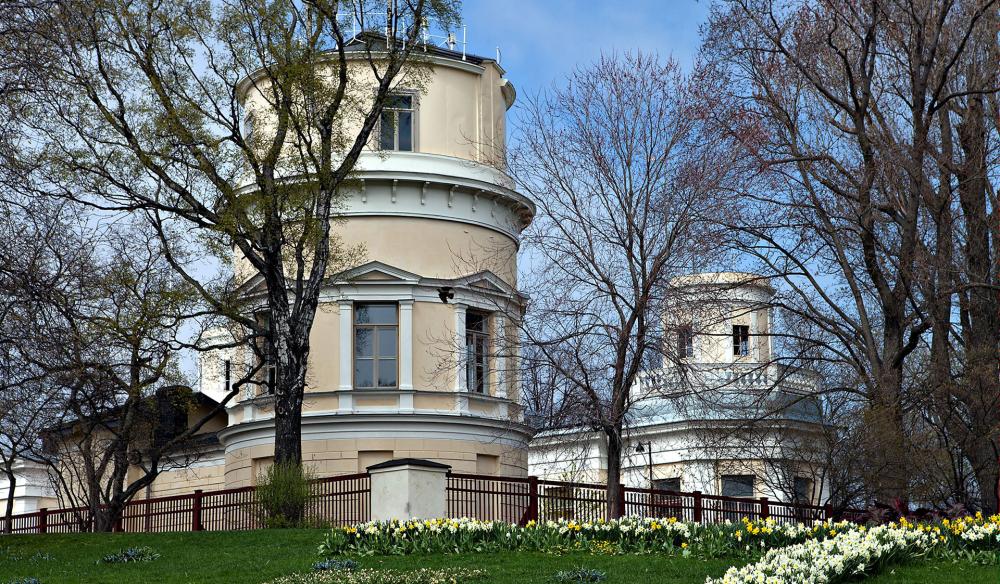
Fig. 3. New Astrographic Dome of Helsinki University Observatory, Carte du Ciel (1890), (Hym Nosto)
Developments around 1900
The Helsinki observatory was modernised for astrophotography with the construction of an addtional tower (1890) by the architect Gustaf Nyström (1856--1917). Here stands a 33-cm-double refractor, the astrograph (photographic and visual objective). This was important for the participation in the international "Carte du Ciel" project. A dark room was added. Many female computers were active in measuring the photographic plates.
History
Gustaf Hällström (1775--1844), professor of physics, meteorology and astronomy from 1801 to 1844, had started to erect an astronomical observatory in Turku in 1818. In 1828, the University was transferred from Turku to Helsinki, including the astronomical instruments and the library, which survived. The Department of Physics was established in 1832, the Observatory Hill (Tähtitorninmäki) building was ready in 1834.
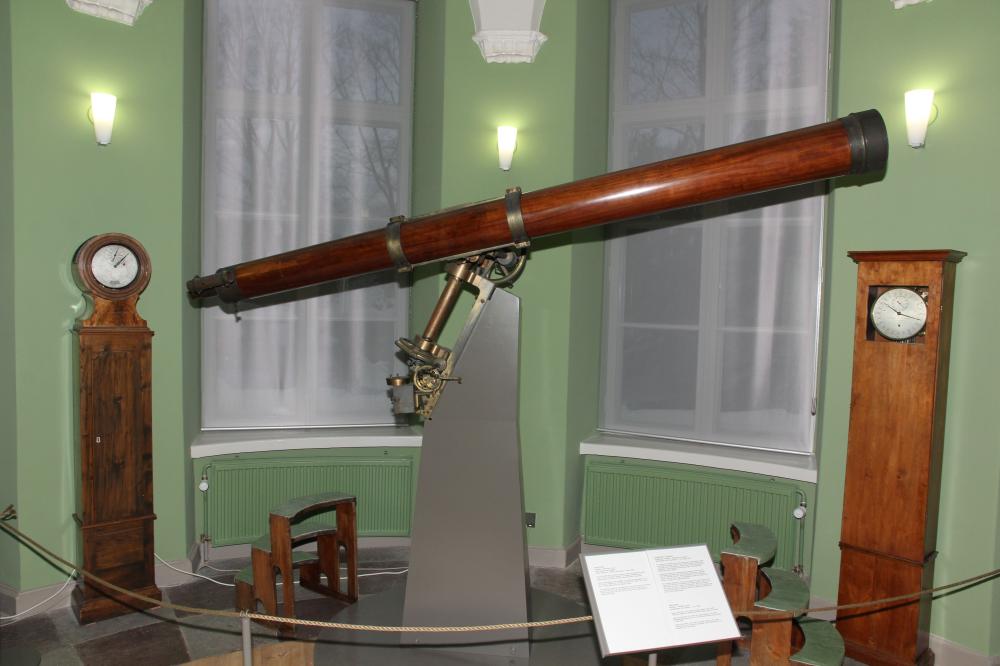
Fig. 4a. Argelander's Fraunhofer refractor and pendulum clocks, Helsinki University Observatory (CC, MKFI)
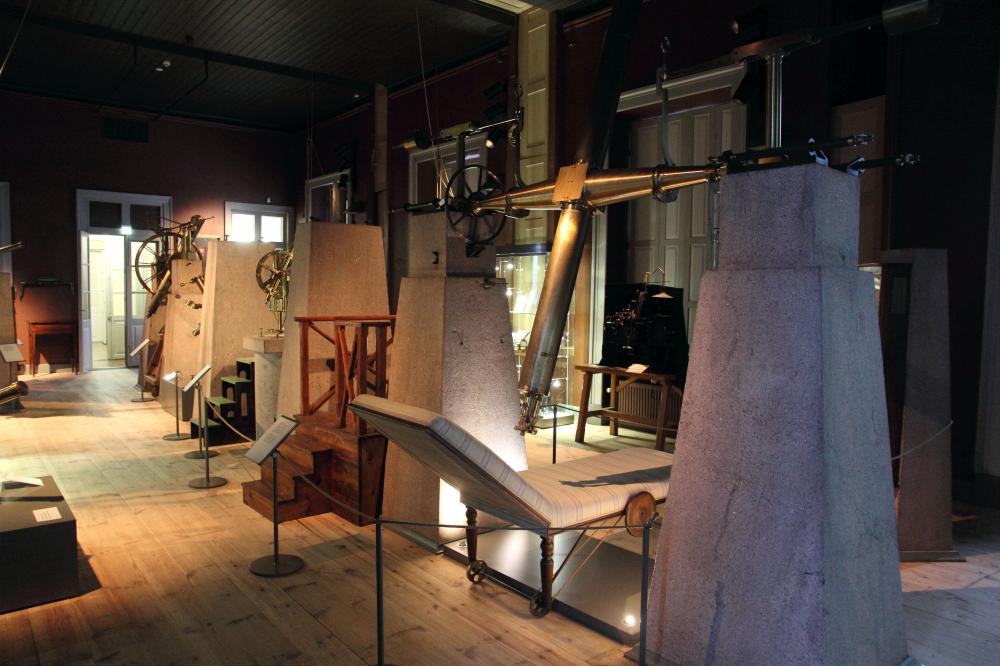
Fig. 4b. Meridian Hall, Helsinki University Observatory (CC, MKFI)
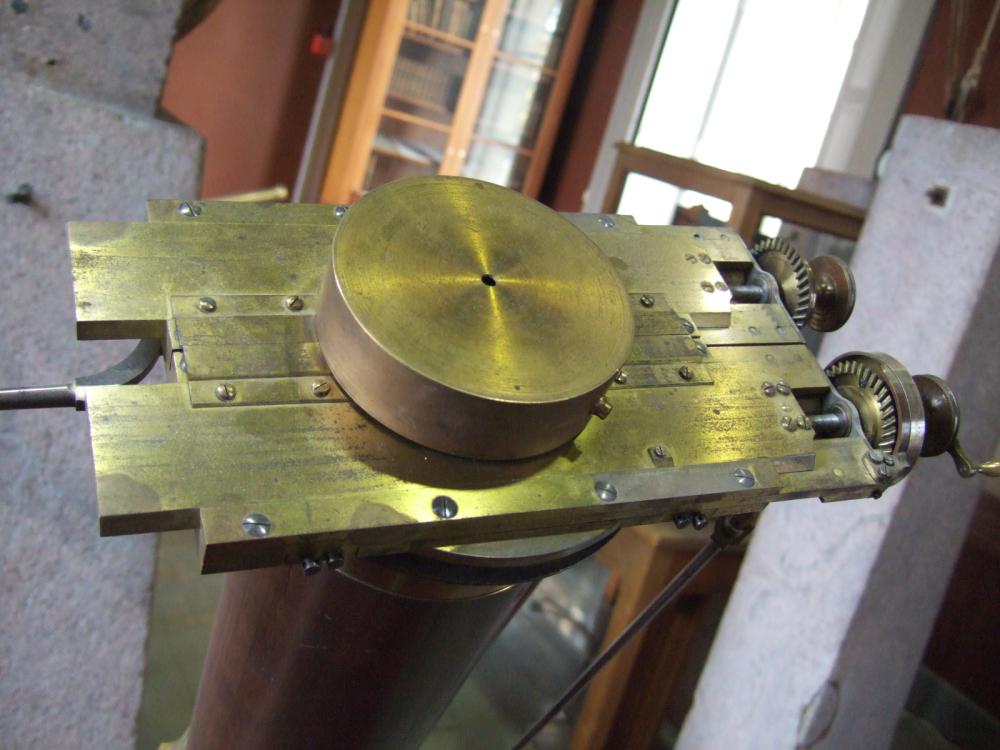
Fig. 4c. Heliometer, Helsinki University Observatory (CC)
Instruments of the old and new observatory
- Transit instrument (1823)
- Heliometer made by Fraunhofer of Munich
- 20-cm-Refracting telescope made by Fraunhofer of Munich (1823) for Argelander
in a revolving cylindrical tower (not yet a dome) - Meridian circle (1827)
- 33-cm-double refractor - astrograph (photographic and visual) (1890)
- 35-cm-Cassegrain reflecting telescope
- 60-cm-telescope
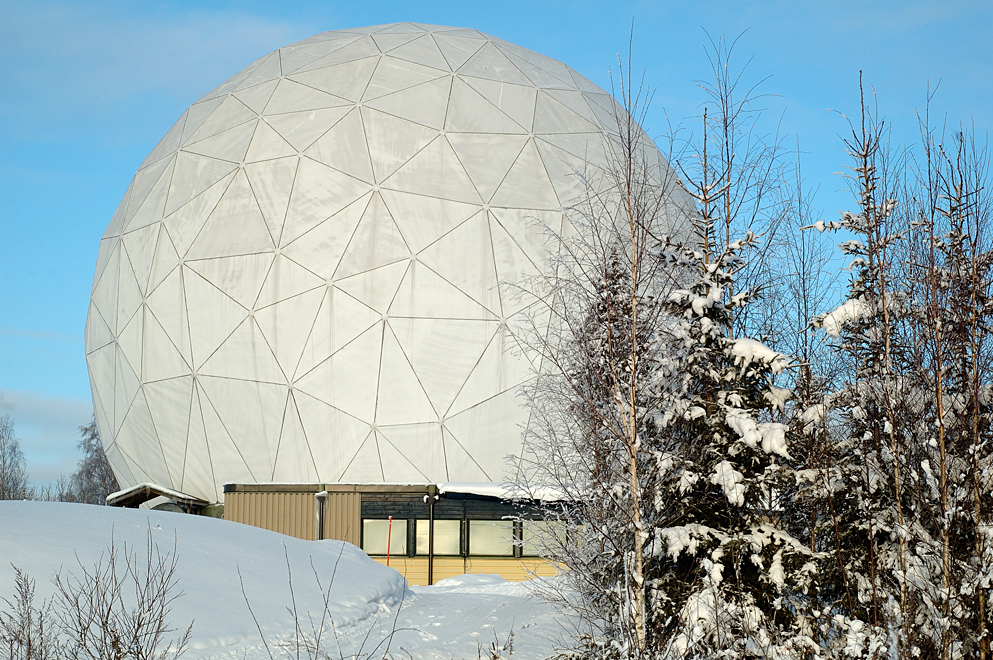
Fig. 5. Metsahovi Radio Observatory ( CC3 Jan Wagner)
Metsähovi Radio Observatory - together with Aalto University
- 3-m-small radio telescope
- 13.7-m-radio telescope (2-150 GHz)
- Metsähovi Compact Array: array of four 5.5-m-dishes to serve as a compact interferometer
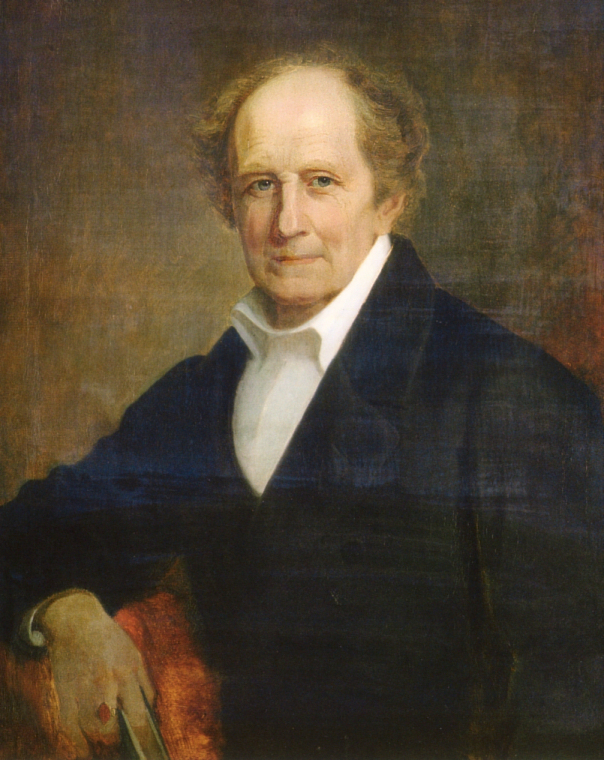
Fig. 6. Friedrich Wilhelm August Argelander (1799--1875), painting by August Bausch (1818--1909), (CC)
Directors
- 1834 to 1837 -- Friedrich Wilhelm August Argelander (1799--1875)
- 1862 to 1876 -- Karl Nikolaus Adalbert Krueger (1832--1896)
State of preservation
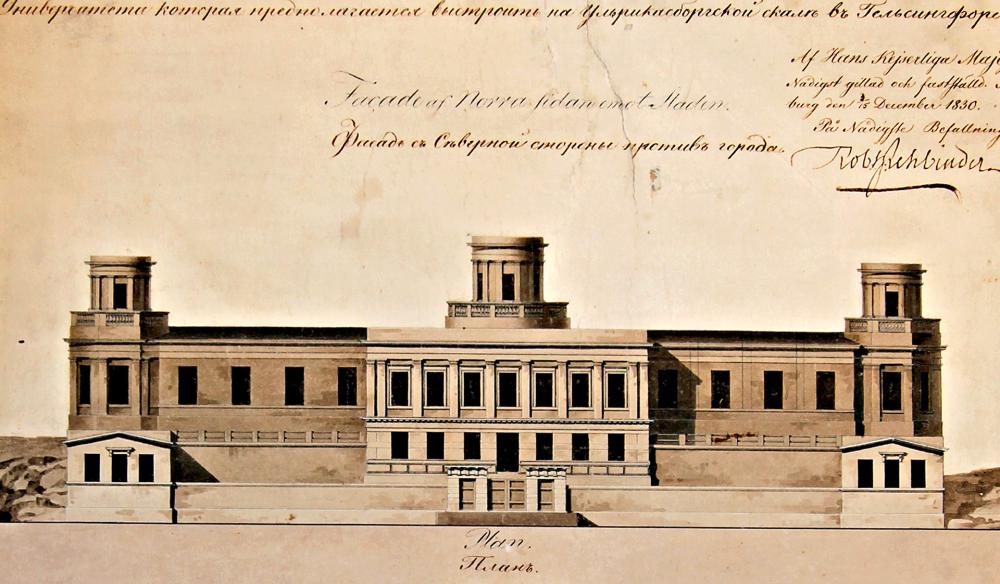
Fig. 7a. Helsinki University Observatory (1834), (CC, Hym Nosto)

Fig. 7b. Helsinki University Observatory, a Finnish cultural heritage, (CC4, Eteil)
The Helsinki Observatory building suffered from bombings of Helsinki in 1944; the photographic dome was damaged.
In 1984, a large restoration activity took place - due to the 150th anniversary of the observatory.
The observatory building was again renovated between 2011 and 2012. Now the building is well preserved.
It is a heritage monument in Finland with the number 'Q60674216' (Q60674216) - Building protected by Decree 480/85 in Finland. Building protected by a city planning scheme.
Comparison with related/similar sites
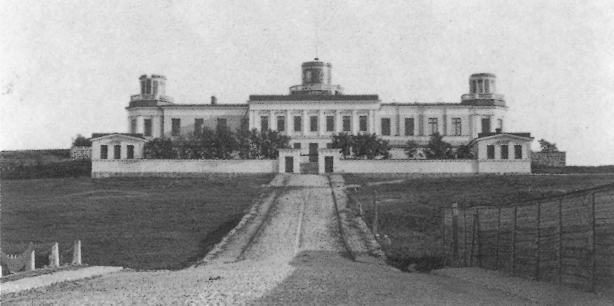
Fig. 8. Helsinki University Observatory (1834), (CC, photo: Eugen Hoffers)
Helsinki is the oldest observatory with a three Dome Facade, the next was Kazan University Observatory (1837), and then the famous Pulkovo Observatory, St. Petersburg (1839).
Threats or potential threats
no threats
Present use
The old Helsinki Observatory building was restored in 1984 for the 150th anniversary.
The Meridian Room was refurbished into an exhibition area.
Since 2012 the Observatory has accommodated the Helsinki University Museum's Centre for Astronomy.
Astronomical relevance today
The old observatory building is no longer used for astronomical research. In 1952 a Radio Astronomical Station was accommodated by the Department of Physics. Later it was renamed as the Astrophysics Laboratory, and in the beginning of the 1970s merged to the Department of Astronomy, together with the Observatory.
In the 1970s, due to light and air pollution, the Metsähovi Observatory was built in Kirkkonummi 30 km outside Helsinki (60-cm-telescope and 13.7-m-radio telescope, 2-150 GHz), belonging to Aalto University.
Since 2010, the Department of Physics -- merged with the Department of Astronomy and Geophysics -- is located in the Kumpula Campus, Gustaf Hällströmin katu 2a, FI-00560 Helsinki.
Today, there are international cooperations, e.g. with the Canary Islands and with the European Southern Observatory (ESO) in Chile, and the use of different observation satellites.
References
Bibliography (books and published articles)
- Argelander, Friedrich Wilhelm August: Observationes astronomicae in specula universitatis Fennicae factae. 3 Bände Helsinki (Helsingfors) 1830-1832.
- Argelander, Friedrich Wilhelm August: DLX stellarum fixarum positiones mediae ineunte anno 1830 (Catalogus Aboensis). Helsinki 1835.
- Chapman, David M.F.: Reflections: F.W.A. Argelander - Star Charts and Variable Stars. In: Journal of the Royal Astronomical Society of Canada 93 (February 1999), p. 17.
- Corbin, Brenda G.; Bryson, Elizabeth P. & Marek Wolf: Library and Information Services in Astronomy IV (LISA IV). Proceedings of a Conference Held at Charles University, Prague, Czech Republic, July 2-5, 2002. Washington, D.C.: U.S. Naval Observatory 2003, p. 331-332.
- Donner, Anders Severin: Den astronomiska forskningen och den astronomiska institutionen vid det finska universitetet. II. Tiden från Argelander till Krueger. Akademisk inbjudningsskrift. Helsinki 1909.
- Hamel, Jürgen: Bessels Projekt der Berliner Akademischen Sternkarten. In: Die Sterne, Band 65 (1989), S. 11-19.
- Krueger, Adalbert: Minnestal öfver Friedrich Wilhelm August Argelander. In: Acta Societas Scientiarum Fennicae 10 (1875).
- Mattila, Kalevi: personal communication (2018).
- Markkanen, Tapio; Linnaluoto, S. & M. Poutanen: Tähtitieteen vaiheita Helsingin yliopistossa: Observatorio 150 vuotta. Helsinki: Helsingin yliopisto, Observatorio 1984.
- Markkanen, Tapio: Argelander, Friedrich Wilhelm August. In: The Biographical Encyclopedia of Astronomers. Berlin: Springer Publishing 2007, p. 58, doi:10.1007/978-0-387-30400-7_69
- Niesen, Josef: Bonner Personenlexikon. Bonn: Bouvier (3., verbesserte und erweiterte Auflage) 2011.
- Schmidt, Hans: Astronomen der Rheinischen Friedrich-Wilhelms-Universität Bonn - Ihr Leben und Werk 1819-1966. Bonn: Bouvier Verlag 1990.
- Sticker, Bernhard: Argelander, Friedrich Wilhelm August. In: Dictionary of Scientific Biography, Vol. 1. New York: Charles Scribner's Sons 1970, p. 240-243.
- Wolfschmidt, Gudrun: Vorwort: Astronomie im Ostseeraum - Astronomy in the Baltic, here: Sternwarte Helsinki (1834). Wolfschmidt, Gudrun (ed.): Astronomie im Ostseeraum -- Astronomy in the Baltic. Proceedings der Tagung des Arbeitskreises Astronomiegeschichte in der Astronomischen Gesellschaft in Kiel 2015. Hamburg: tredition (Nuncius Hamburgensis; Vol. 38) 2018, p. 46--47.
- Zinner, Ernst: Argelander, Friedrich Wilhelm August. In: Neue Deutsche Biographie (NDB). Band 1. Berlin: Duncker & Humblot 1953, S. 350.
Links to external sites
- Helsingfors observatorium - Observatoriets Historia
- History of the Department of Physics, Gustaf Hällströmin katu 2a, FI-00560 Helsinki.
- Observatory - Helsinki University Museum Flame, History of the Museum
- Helsinki University Observatory (Wikipedia)
- Metsähovi Radio Observatory, Aalto University (1974) (Wikipedia)
Links to external on-line pictures
no information available
No multimedia content published
Currently there is no multimedia content published for this case study













